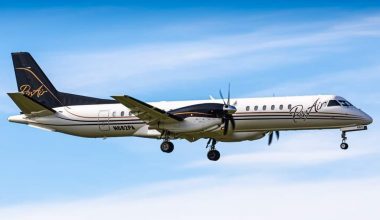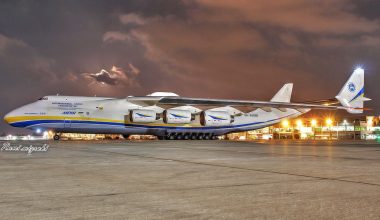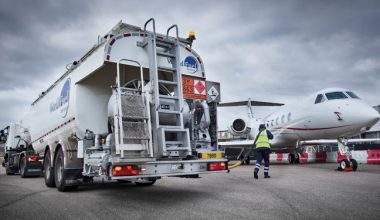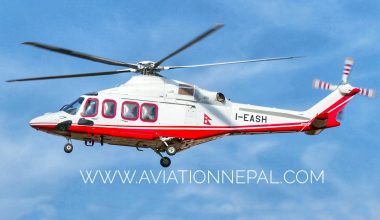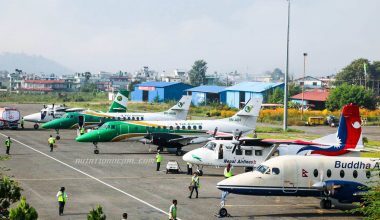What is situational awareness ? Why situational awareness in the workplace is important ? We will focus today on this topic. Situational awareness deals with knowing what is happening around us’. It is the insight of environmental elements within the volume of time and space, acknowledging their essence and forecasting their status in the time being. Situational awareness is a critical foundation for wise and successful decisions, encompassing a broad range of situations. Such decisions involve the safety of aircraft and passengers on board. Inattention to situational awareness can be attributed to one of the major factors in accidents relating to human error. Human errors are part of the aviation industry.

In some situations, these errors drive the learning, become a source of motivation, and even spark to let the innovation begin. However, in extreme situations, human errors are proven to be harmful and need to be minimized or avoided completely. In aviation, human errors can result in severe consequences. Such deviations from actual paths can undermine aviation performance.
Read More: Public Awareness: Use of electronic devices inside an aircraft
Situational awareness in aviation means comprehension of all things you need to know about what’s occurring when the full scope of the task you are performing-flying, aircraft maintenance, ground handling, etc. are taken into consideration. In a complex and fast-paced environment, situational awareness concerns a person’s intellect on particular events or procedures. For example, a military pilot’s situational awareness implies recognizing the threats and motives of enemy forces and the condition of his/her own plane. For Air Traffic Controller (ATC), situational awareness is about being updated on aircraft positions on the runway, flight plans, and estimating future conditions so as to solve possible incidents. So, situational awareness means appreciation of present state and dynamics of system and ability to anticipate future conditions and developments.

The basic ideology behind situational awareness is the distinction between person and environment. The environment encompasses everything going on around a person, and environmental elements concern the activity of situational awareness always getting performed. It can be a task or something that needs interaction with a person’s relevant environmental elements. Basically, situational awareness alerts the person about what is happening in the surroundings and its implication in the near future. In a simple situation, it may seem straightforward, but it can be a real challenge in a fast-changing, difficult environment.
Situational awareness is all about knowing your surrounding well. It concerns-
- What are the factors influencing what air activities are being performed today?
- What can go wrong?
- Am I where I am supposed to be?
The situation in situational awareness
The situation can be characterized as having a high level of uncertainty, ambiguity, complexity, and vitality. It differs according to the individuals. For example, for a captain, situational awareness implies understanding the current inter-relationship of locations, efficiency of aircraft, flight conditions, or any other factors that can lead to compromising safety such as sudden weather changes, proximate terrain obstructions, etc. For ATC, situational awareness means mental picturization of air traffic management in the ground and predicting the potential of unforeseen progressions or scenario changes.
Why is situational awareness important for the airline industry?
By paying attention to situational awareness, a person can increase safety, task activity, team, and overall airline performance. Situational awareness can help in error prevention and improvement of the individual’s performance and the aviation organization. The lack of situational awareness can lead to potential consequences like the loss of aircraft control, air turbulence, airspace infringement, heavy winds, etc. Situational awareness is one of the most important intellectual and mental skills aviation professionals require.
Situational awareness involves an appreciation of what’s going on in the vicinity to understand how information, circumstances, and one’s own action will affect the aviation or airline’s goals and aims currently and in the future. Situational awareness begins with developing sound mental toughness, being physically fit; thinking of ‘what ifs’ and making sure you have the spare ability to deal with the unknown.

As aviation and flying deal with technological and situational complexity in the aviators’ decision-making, it is highly essential to have complete, accurate situational awareness. It deals with ‘What’s happened?’ ‘What’s happening?’ and ‘What might happen?’
Many aircraft accident investigation reports have identified loss of situational awareness as contributing factor. Many things can lead to compromising situational awareness. They are ineffective communication, stress and fatigue, high workload, and challenging environmental conditions. The human factor is not a result of a single factor. Software, hardware, liveware, and environment all can amount to hazards. The conditions related to human error are time pressure, shift turnover, unsafe working condition, working without authority, overconfidence, etc.
While flying involves operating in a dynamic, continually changing environment, situational awareness can cement up protection of aircraft property and passengers. One of the models in understanding situational awareness is Perception, Comprehension (what is it doing), projection (what is going to happen in 15 hours.)
Poor situational awareness has cost human lives when we look into aviation history. For example, The Air France AF 447 accident led to the fatality of 228 lives because of irrational reactions caused by information overload, stress, and panic. The experienced pilots failed to refer to an elemental artificial horizon during a timeframe of almost 4 minutes. One other accident resulting from the loss of situational awareness is Eastern Airlines Flight 401 in 1972. Flying from New York to Miami, which had a troubleshooting problem in landing, eventually crashed, killing 99 people.
In the airline field, something is always out of place. The internal risk elements are within aircraft, such as aircraft status, airworthiness, current condition, the status of passengers, crew members, cargo (dangerous goods). External risk elements are other aircraft, terrain or topography, weather trends, ATC (busy and well-staffed).

It is vital to remember that which you don’t know can kill you in air transport nature. What makes it safe is tremendous knowledge, expertise, and experience. E.g., you are having a level 5 storm while flying and the aircraft is small and doesn’t have onboard radars, and the airport is 1 hour away, then all these scenarios require the pilot to be situationally aware.
Owing to the level of airplane operations, the complexity of tasks, workers, aircraft equipment can face different safety hazards. The accidents are costly to airlines, employees, and passengers. The inadequate situational awareness can culminate in human injury or aircraft damage.
Ways to improve situational awareness
- Predicting the future (e.g., where’ll the aircraft be in 5 minutes)
- Identify the threats (e.g., Storms, mountains, which pose a risk to flight)
- Minimize task overload (e.g., avoid complacency)
Situational awareness in the workplace
Situational awareness is essential to everyone in the workplace. It’s the inherent nature of the aviation workplace to be surrounded by potential hazards. When tasks have become a routine, then even experienced pilots or ground handlers can lack situational awareness. In the workplace, say the airport, situational awareness can be reduced when workers or staffs are under pressure to get aircraft departure on time. The ground handler needs to be aware of checking in genuine passengers, flight attendants need to make what’s going inside, and outside of aircraft, flight dispatchers should maintain the weight and balance of airplanes.

Situational awareness is only as precise as our ability to read the situation, which can be affected by information flow and distractions in the workplace. Aircraft and airports are the main workplaces. In the workplace, there isn’t only a single person working. One’s mistake can seriously harm other’s health and safety. Error in part of pilots can kill livers of all passengers on board.
The maintenance of situational awareness in the workplace can contribute to airline or airport’s financial viability effectively and efficiently. Not only that, it will demonstrate a commitment to the most valuable asset of any organization: its people.
Many different agencies are involved in flying an aircraft like immigration, check-in staff, security personnel, ramp handlers, load control department. So every department in the workplace should recognize hazards and show a willingness to act to control any hazard present.
Situational awareness training in flying
For pilots, situational awareness training concentrates on technological improvements like moving maps, displaying real-time traffic and weather, increasing the level of preflight preparation, knowing the aircraft equipment and its limitations, flight elements (weather, airport status), etc.

The training should focus more on understanding and projecting information in the immediate environment. The training should demonstrate the critical incident review with pilots.
The situational awareness training for the aviation workers involves:
1. Task management
Based on the severity of the task and situation, relevant task management will help improve situational awareness. It helps in actively managing tasks so that none of the airline staff are overloaded with tasks and miss critical information.
2. Comprehension development
Situational awareness training must gauge the temporary aspects of an immediate solution; risks involve developing the personal and system capabilities to deal with the incidents.
3. Planning and projection
Training to use projections skills helps the aviators to see the information in advance and plan for the contingent situations.
4. Information seeking and self-checking
Seeking out urgent information and checking the validity of own situation assessment can result from active situational awareness training.
Hence the airlines that aim to achieve zero accidents and incidents should conduct situational awareness training, especially in areas susceptible to various types of risks.

